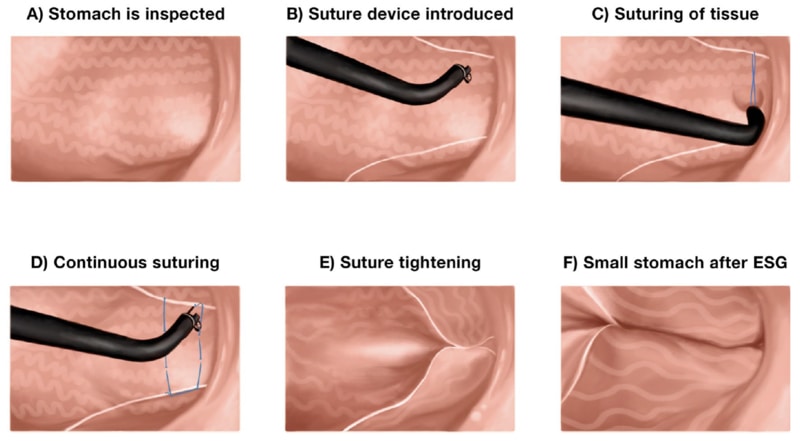- srushtigastro@gmail.com
- +91- 8073380392
Endobariatrics

Endobariatrics represents a revolutionary approach to addressing obesity and its associated comorbidities. Unlike traditional surgical interventions like gastric bypass or sleeve gastrectomy, which require invasive procedures, endobariatric techniques are performed entirely through the mouth and down the esophagus, utilizing flexible endoscopes and specialized instruments. These procedures typically involve altering the structure or function of the stomach to promote weight loss and improve metabolic health.
Endobariatric procedures may include gastric balloons, which are inserted into the stomach and inflated to reduce its capacity, thereby inducing satiety and restricting food intake. Endoscopic sleeve gastroplasty (ESG) is another technique that involves suturing the stomach from within, effectively reducing its volume and altering its shape to mimic the effects of a surgical sleeve gastrectomy. Other approaches include intragastric injection therapies, such as the injection of biocompatible materials into the stomach lining to create a feeling of fullness and reduce appetite.
These endoscopic interventions offer several advantages over traditional bariatric surgery. They are less invasive, leading to reduced postoperative pain, shorter recovery times, and lower risk of complications such as infection or herniation. Additionally, endobariatric procedures are generally performed on an outpatient basis, eliminating the need for hospitalization and allowing patients to resume their daily activities more quickly.
Looking for the best Endobariatrics in HSR Layout? Then you are in the right place. Contact us today.
Benefits:
Overall, endobariatrics offer a promising avenue for the management of obesity and metabolic disorders, providing effective, minimally invasive interventions that can improve both weight and metabolic health outcomes for patients.
Empowering assistance, right when it matters. We’re here to lend a hand whenever you need it.

Call : +91- 8073380392
srushtigastro@gmail.com
Srushti Gastro & liver Clinic 186, 165, 9th Main Rd, Sector 6, HSR Layout, Bengaluru, Karnataka 560102